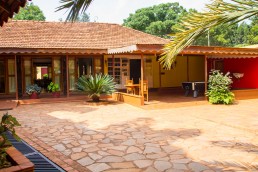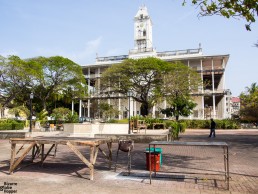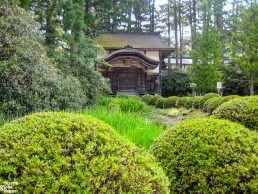Oku-no-in is a Buddhist/Shinto graveyard in Koyasan, near Mount Koya in Japan. Oku-no-in is considered to be the holiest place in Koyasan. In the middle of a thick forest of cedar trees its over 200 000 tombstones, hundreds of years old, stand covered in moss and vegetation creating an atmosphere of eerie ghost stories.
Go for a nighttime walk when all the old, Japanese stone lanterns are glowing their shimmer light in the darkness and you can’t but keep looking over your shoulder, as if something else was there, following you. Tombstones lay on top of each other, crooked, half collapsed. The darkness of the forest embraces the graveyard and it feels like you’ve just stepped through a time portal and are walking in the ancient, feudal Japan. Wander off the main corridor, to the narrow paths zigzagging deeper into the woods and you’ll feel like you won’t find your way back again.
Go during the day and the atmosphere is entirely different. Though the mysterious vibe in the air is still there. Besides a place to feel – and maybe see – ghosts, (as if they are not here, I can’t imagine where they’d be) Oku-no-in is a sacred place to Buddhists and a place for worship.
A famous Buddhist monk, Kobo Daishi is buried in Oku-no-in, and his mausoleum is considered to be one of the most sacred places in Japan. Walk the stone pathways towards the mausoleum and on the way be mesmerized of the hundreds of lanterns of the Todoro (Hall of Lamps), burning in the night. Two lanterns at the back of the Hall are said to have remained lit for nearly thousand years: the lamp of Kishin (”the single lamp of a poor woman”) and the lamp donated by Emperor Daigo. All in all, the sight is dazzling. Like an island of light in the middle of the ocean of pitch black darkness.
Kobo Daishi (Kūkai) was a monk who lived between 774-835 and instead of being actually dead, he is believed to be in eternal meditation – a state that according to the Buddhist tradition can be accomplished only by the holiest of the monks. Even today, the monks living in Koyasan treat him as if he were alive. Pilgrims come to Oku-no-in to worship his uncorrupted body as to ask for salvation, which they’re said to get.
Is it the atmosphere created by the several monasteries of Koyasan, the eerie graveyard itself with the undead monk or the fact that this is a sacred place to so many people, the conclusion is that there’s definitely something magical in Oku-no-in (奥之院).
You May Also Like to Read:
Sight of the Week: Historical Masindi Hotel, Uganda
Historical Masindi Hotel in western Uganda has hosted Ernest Hemingway, Katharine Hepburn, and Humphrey Bogart, among other stars.
Forodhani Gardens Street Food Market, Zanzibar
At the time of sunset, Forodhani Gardens transform into a lively street food market, where locals and tourists alike stroll between food stalls to pick Zanzibari and Swahili delicacies.
Finding Zen in Koyasan – Japan’s Sacred Mount Koya
In Koyasan, Mount Koya in Japan, you can walk on centuries-old cemetery, visit a monk in eternal meditation, and spend the night in a Buddhist monastery.
Sight Of The Week: The Irrawaddy Dolphins, Cambodia
Take a traditional fisher boat and go meet the rare Irrawaddy dolphins living just north of the little town of Kratie, via the Mekong River.





